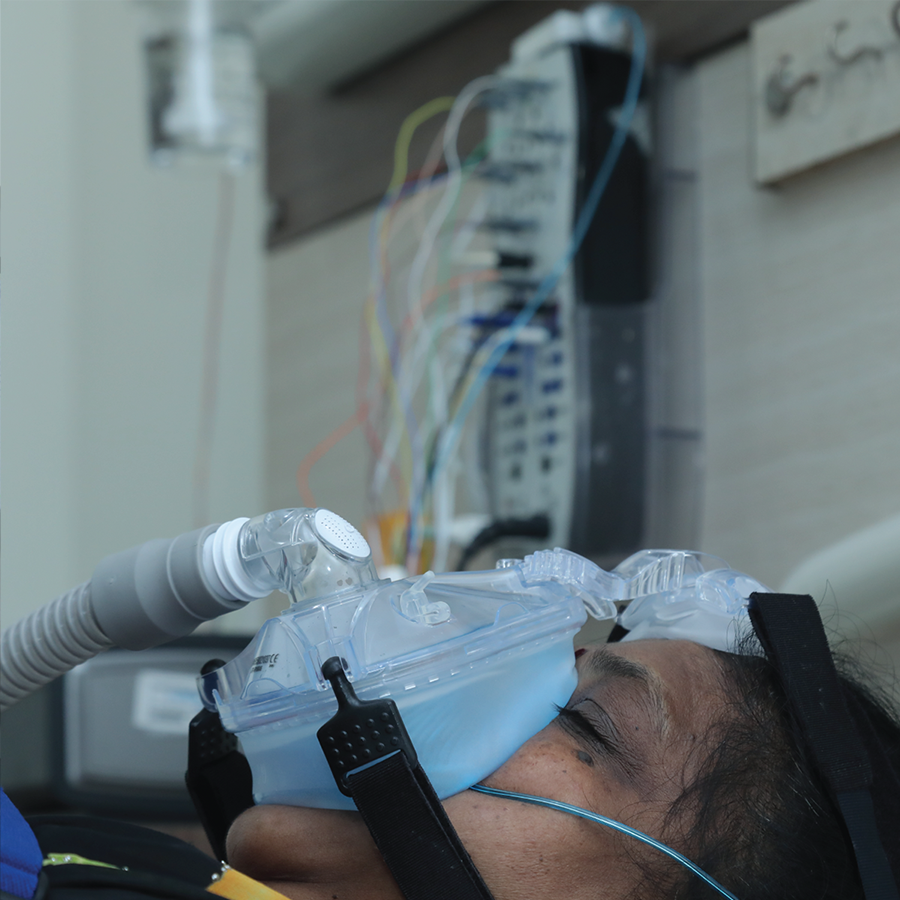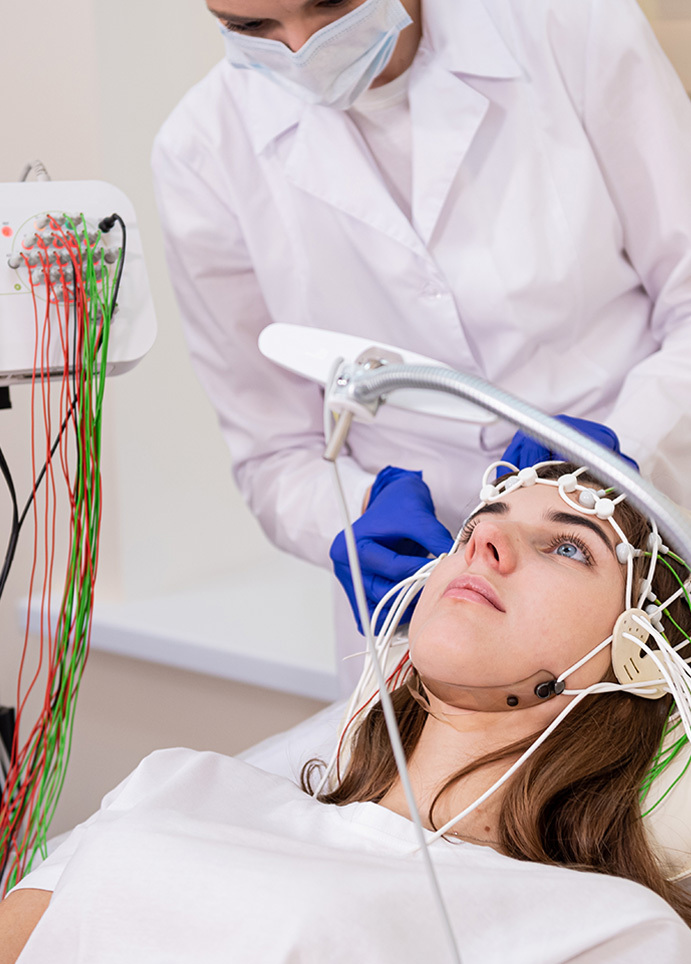All You Need to Know Regarding Sleep Researches and Their Duty in Detecting Sleep Disorders
Rest researches, or polysomnography, are important tools in understanding and identifying different sleep conditions. By checking physiological signals like mind activity and heart price, these examinations provide beneficial insights into an individual's rest patterns. The outcomes can expose conditions such as sleep problems and rest apnea, bring about targeted treatment strategies. Many continue to be not aware of the various kinds of rest researches and their details procedures. Exactly what can one anticipate throughout a sleep study?
What Are Sleep Studies?
Sleep studies, likewise referred to as polysomnography, are diagnostic tests used to assess and observe rest patterns and disorders. These tests usually happen in a controlled atmosphere, such as a rest facility, where people are monitored overnight. Throughout the research, different physiological signals are recorded, consisting of mind waves, heart price, oxygen degrees, and muscle activity (Sleep Study Bangalore). This comprehensive information collection allows health care specialists to recognize sleep-related concerns, such as sleep apnea, sleeplessness, and restless leg disorder. The evaluation procedure not just assesses the amount of sleep however additionally its high quality, assisting to determine irregularities. Sleep research studies are vital for developing proper treatment strategies, as they offer understandings into the underlying root causes of sleep disruptions. By recognizing an individual's unique rest style, doctor can recommend lifestyle adjustments, medicine, or added interventions to boost general sleep health and well-being
Kinds of Rest Studies
While various kinds of sleep research studies exist, they are largely classified based upon the particular conditions being checked out and the approaches employed. One typical kind is polysomnography (PSG), which records brain waves, oxygen levels, heart rate, and breathing during rest. This comprehensive analysis is especially useful for diagnosing sleep apnea, sleep problems, and other rest conditions.
One more kind is home sleep apnea screening (HSAT), which provides a streamlined variation of PSG for individuals believed of having rest apnea. This approach permits keeping an eye on in an acquainted setting, improving comfort and convenience.
Actigraphy is another method, using a wrist-worn tool to track motion patterns, thus supplying understandings right into sleep-wake cycles. Finally, multiple rest latency examinations (MSLT) evaluate daytime drowsiness and aid detect narcolepsy by determining exactly how promptly a specific drops asleep throughout the day. Each sort of rest research study serves an unique purpose in recognizing rest wellness.

Exactly How Rest Researches Are Conducted
Rest researches are conducted through various techniques, each made to analyze certain facets of rest actions and physiology. Throughout these researches, monitoring tools tracks brain activity, heart rate, and breathing patterns to gather substantial data. This information is essential for diagnosing sleep disorders and establishing efficient treatment options.
Kinds Of Rest Researches

Checking Throughout Sleep

Usual Rest Disorders Diagnosed
Generally come across in professional settings, rest disorders encompass a variety of problems additional resources that considerably affect an individual's high quality of life. Amongst the most prevalent are sleeplessness, characterized by problem falling or remaining asleep; rest apnea, which involves repeated interruptions in breathing during rest; and agitated legs disorder, noted by an alluring desire to move the legs. Narcolepsy is one more considerable disorder, resulting in extreme daytime sleepiness and abrupt sleep assaults - Sleep Study Bangalore. Additionally, parasomnias, such as sleepwalking or night fears, interfere with sleep with abnormal behaviors. These problems can have extensive results, including damaged cognitive function, mood disturbances, and enhanced threat of chronic wellness problems. Precise medical diagnosis of these problems typically depends on complete rest research studies, which assist recognize particular conditions and guide reliable therapy strategies. Comprehending the nature and symptoms of these common rest disorders is vital for improving person results and enhancing general well-being
Understanding the Outcomes of Rest Studies
While analyzing the outcomes of rest studies may appear intimidating, a clear understanding of the data can greatly assist in identifying sleep conditions. Rest researches, or polysomnographies, give substantial understandings right into a person's sleep patterns, consisting of mind activity, eye movement, heart rate, and oxygen levels. Each of these elements can expose necessary info regarding sleep quality and disruptions.
Secret metrics include the Apnea-Hypopnea Index (AHI), which suggests the seriousness of sleep apnea, and sleep phases, which assist examine the amount of corrective sleep. Patterns of fragmented rest or prolonged wakefulness may signal other problems, such as sleep problems or uneasy leg syndrome.
In addition, hypnograms aesthetically stand for rest cycles, allowing professionals to pinpoint specific issues. By evaluating these outcomes, healthcare professionals can create a much more accurate medical diagnosis, causing targeted interventions for boosted sleep wellness and general well-being. Recognizing these outcomes is essential for reliable management of sleep-related problems.
Treatment Options Adhering To a Sleep Research Study
After translating the results of a sleep research study, individuals and health care providers can discover numerous treatment choices tailored recommended you read to particular rest conditions. For problems like obstructive sleep apnea, constant favorable respiratory tract stress (CPAP) therapy is generally recommended to keep respiratory tracts open throughout sleep. In instances of insomnia, cognitive behavior treatment for sleep problems (CBT-I) offers efficient techniques to enhance rest patterns. Medicines might also be suggested on a temporary basis however are normally not a first-line treatment. For uneasy legs syndrome, way of living alterations, iron supplements, or dopaminergic medicines may be suggested. Those detected with narcolepsy may gain from stimulant medications to take care of extreme daytime drowsiness. Furthermore, dealing with underlying health concerns, such as obesity or anxiousness, can greatly boost sleep high quality. Generally, therapy plans are individualized, thinking about the person's specific diagnosis and personal health situations to enhance results.
Tips for Planning For a Sleep Study
Planning for a sleep study can significantly enhance the accuracy of the outcomes, as people that comply with details guidelines are he said more probable to have a successful experience. To assure suitable problems for the research, people need to preserve their normal rest routine in the days leading up to the appointment. It is recommended to avoid caffeine and alcohol 24-hour before the research study, as these substances can disrupt rest patterns.
Individuals must likewise consult their health care service provider concerning medications, as some may need to be readjusted or held back prior to the study. In addition, using comfy, loose-fitting apparel can help promote relaxation throughout the night. Bringing individual products such as a favorite pillow or covering might also add to a much more peaceful environment. Ultimately, getting to the facility promptly enables necessary preparations and lowers any kind of tension related to the study. Adhering to these pointers can lead to more purposeful and exact results.
Regularly Asked Inquiries
Are Rest Research Studies Covered by Insurance?
Rest studies are frequently covered by insurance coverage, yet insurance coverage differs by plan and individual circumstances. Individuals need to consult their insurance company to confirm particular benefits and possible out-of-pocket costs connected to the sleep research study.
Can I Take Medications Before a Rest Research?

Individuals are usually suggested to prevent taking medications before a rest research, as particular materials might hinder the outcomes. Consulting a health care supplier for particular guidelines customized to one's circumstance is suggested.
Exactly how Do I Select a Sleep Facility?
To choose a sleep facility, one must take into consideration factors such as accreditation, offered modern technology, personnel credentials, client evaluations, place, and whether the center provides extensive services tailored to particular rest disorders.
What Should I Wear During a Sleep Research study?
For a rest study, comfy, baggy sleepwear is advised. It needs to allow very easy movement and not limit sensors. Prevent hefty fabrics and complex outfit to ensure a restful rest experience during the analysis.
Exactly how Long Does It Take to Receive Outcomes?
Arise from a rest study usually take one to two weeks to be refined and assessed by experts. Clients must anticipate to obtain an in-depth report laying out searchings for and potential suggestions shortly thereafter.
Sleep researches, likewise recognized as polysomnography, are diagnostic examinations utilized to observe and analyze sleep patterns and disorders. Rest studies are crucial for creating ideal treatment strategies, as they offer understandings into the underlying causes of sleep disruptions. Exactly how are sleep studies carried out to assure exact monitoring of rest patterns? While analyzing the results of rest researches might appear challenging, a clear understanding of the information can substantially aid in identifying sleep conditions. Trick metrics include the Apnea-Hypopnea Index (AHI), which shows the severity of sleep apnea, and rest phases, which assist analyze the quantity of restorative rest.